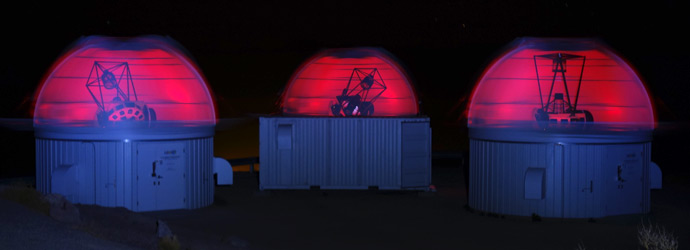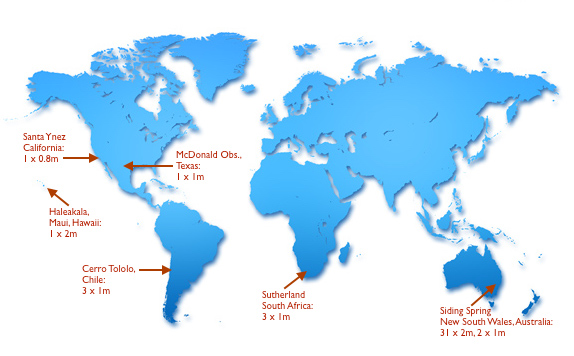
LCO telescopes at Cerro Tololo. Image credit: NOAO/AURA/NSF.
Robotic telescopes are a great way to observe Gaia alerts from the ground. You enter details of your observations on-line and the robot does them as the targets come into view; you can download the pictures later. If the robotic telescope is in a different time-zone, you may even be able to observe while it's daytime where you are!
There are many robotic telescopes around the world, some of them organized into networks. The Gaia programme has links with one such network, the Las Cumbres Observatory (LCO; aslo known in the past as the Las Cumbres Observatory Global Telescope, LCOGT)
Following up Gaia alerts with LCO
You can request observations at the LCO observing portal -- but please first read below about getting an allocation of telescope time on LCO.

LCO sites map. Image credit: Guy Rixon.
LCO is a large network currently including two 2-meter telescopes, sited in Hawaii and eastern Australia, nine 1-meter telescopes, sited in Chile, South Africa, eastern Australia, and Texas, and three 0.4-meter telescopes, sited in Chile and the Canary Islands. You might like to read about the LCO project, their telescopes and their instruments.
To use LCO you need an account for access. Teachers in British schools can register for their classes to observe on LCO for free through the Faulkes Telescope Project; please don't go directly to the LCO project for an account. Other educational and amateur groups could ask LGO about access arrangements.
When you have an LCO account, please see our observing guide for details of the kinds of observations we need.
